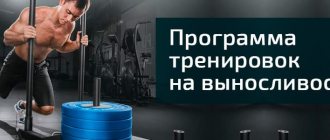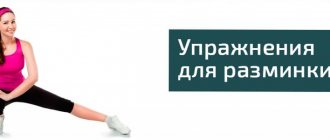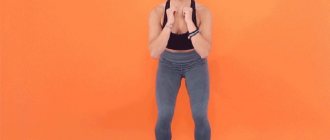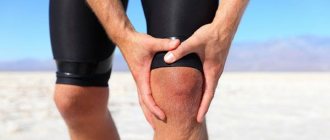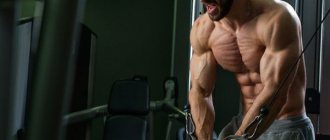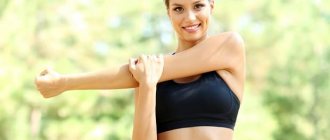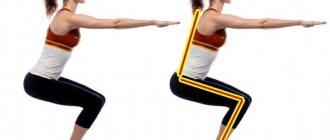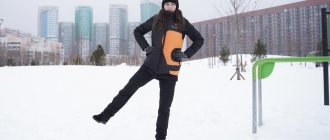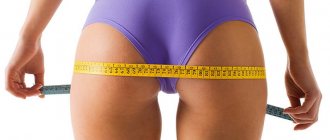© artyme — stock.adobe.com
Share:
People don't like to swing their legs. The main reason is that this is the largest muscle group, which requires maximum effort to work. At the same time, legs are the most important stimulator of anabolic processes; their intensive training causes the body to experience maximum stress.
Many athletes have probably experienced a feeling of serious strength that prevents them from walking the next day after training. Pain means you have given your legs enough exercise to allow them to grow/shrink/get stronger. If you're serious about working out your lower body, it's important to know the best leg exercises to use.
A little about the anatomy of the legs
Before choosing effective exercises for the legs, it is worth studying their anatomy. Like other large muscle groups, the legs are made up of several large muscle groups and many small ones. It makes no sense to work small muscle groups, since they are involved in basic exercises and do not respond well to isolating load.
As for the large muscle groups, they are conventionally divided into the following groups:
- Thigh muscles. These are the quadriceps femoris, biceps femoris, adductors and abductors of the thigh. It is these muscles that decide how the buttocks will look after training.
- Muscles of the knee joint. These are the hamstrings and quadriceps. All of them are responsible for flexion and extension of the leg when walking.
- The muscle of the ankle joint. These are the gastrocnemius and soleus. These also include the opposing muscles, which are responsible for moving the toes, but their training is impractical.
Understanding which muscles work in which exercises is especially important for women: by selecting the right exercises to strengthen the leg muscles, it is easier to carry out local body correction.
© mikiradic — stock.adobe.com
What is osteoarthritis (coxarthrosis)?
Deforming arthrosis, coxarthrosis or osteoarthrosis of the hip joint is a complex of clinical manifestations confirming the onset of degenerative-dystrophic destruction of the osteoarticular, muscular and ligamentous joints in the hip section of the skeletal frame. Painful signs of the disease are accompanied by limited mobility in the joints, muscle atrophy, and shortening of the limbs .
Damage to the left joint. This is what it will look like if measures are not taken at the initial stage of the disease.
The causes of the development of clinical pathology may be hereditary predisposition, old spinal trauma, curvature of the spinal axis, inflammatory processes of an infectious nature in the osteo-articular and muscular sections.
An advanced form of clinical pathology forces a person to take potent medications - painkillers aimed at reducing pain, and anti-inflammatory drugs - to eliminate the inflammatory process.
Photograph of the head of the hip joint with grade 3 osteoarthritis.
A program of drug and physiotherapeutic treatment agreed with the attending physician, and the prescription of therapeutic and preventive exercises for the hip joints will strengthen the musculoskeletal system and return the patient to the ability to move without painful discomfort.
Training Recommendations
Unlike the pectoral muscles and back corset, our legs work almost constantly, and therefore require a special approach to training for growth.
- Remember, your legs are used to high reps, so you need to perform low reps with maximum weight.
- Watch the position of your socks. If necessary, use wooden planks to accentuate the load. Depending on the position of the heels and toes, the load in the same basic exercise can differ radically.
- Remember the rule: first the basic ones, then the isolating ones.
- Legs should not be heavily trained more than once a week.
- Pay attention to your calves right away. Since they participate in all the basic exercises, they need extra stimulation from the very beginning, otherwise they will not grow at all.
- Don't forget about traction. By eliminating deadlifts on leg day, many athletes experience serious hamstring lag.
Gymnastics for diseases of the hip joint I and II degrees
The following set of exercises is recommended for patients suffering from aseptic necrosis of the femoral head, coxarthrosis or moderate arthrosis of the hip joint.
Starting position - lying on your back:
- slowly pull up the legs, bent at an angle of 90º to the body, and slightly spread them to the side. After holding this position for 3-5 seconds, we return to the starting position. A correctly performed movement involves pressing your heels to the floor and sliding them along a flat surface. The exercise is repeated 5-10 times;
- We pull the bent limbs towards the stomach with a smooth movement, providing slight resistance with our hands. This type of therapeutic exercises is performed 5-10 times;
- This positional part of physical therapy ends with an exercise to relax spasmodic muscles. Lying on your back, slightly spread your straight legs to the sides with your feet turned outward. With thighs tense, we turn our feet inward, pressing our knees tightly against each other. We return to the starting position for 5-10 seconds and resume tension in the legs. The position is performed 3-5 times.
Starting position – lying on your side:
- the bent limb at an angle of 90º slowly rises up and smoothly lowers to its original position. The main condition is not to separate your feet from each other;
- We repeat the movements of the previous exercise, turning the body in the other direction. The recommended gymnastic course must be repeated 5-10 times.
Starting position – lying on your stomach:
- placing straight arms along the body, it is necessary to smoothly raise the straightened leg at an angle of 45º with a delay of the position for 15-20 seconds;
- similar movements are made with the other limb;
- bend the right leg at an angle of 45º and perform an upward movement while holding it on weight for 30 seconds to one minute. The peculiarity of this exercise lies in the static position of the pelvic bones pressed to the floor surface;
- repeat the previous exercise with the left limb, holding it in static balance for the same amount of time.
Starting position – standing on the floor:
- feet shoulder-width apart, toes turned slightly to the sides while maintaining balance. We begin light squats, including only the femoral part in the work without straining the knee joints. Return to the starting position without straightening your back. This pendulum movement is performed 5 to 10 times.
Starting position – sitting on a chair:
- sitting on the edge of a chair, you need to alternately lift your right and left limbs with smooth movements, trying to give them a horizontal position;
- being on the edge of the supporting surface and pressing your heels tightly, you need to spread your knees to the sides, trying not to strain the piriformis muscle. Thanks to this exercise, blood is pumped into the hip joint. The treatment complex is performed 15-20 times.
You can complete the therapeutic exercises for the joints of the hip segments with a light preventive massage. Without getting up from the chair, we begin stroking the leg from the knee, continue moving along the anterolateral surface of the thigh, trying not to touch the back of it. The massage continues with intensive rubbing of the thigh on a preheated surface, the same massage procedures are transferred to the other leg. The duration of massage manipulations is from 1 to 3 minutes.
For additional stimulation of blood circulation and better gliding of your hands, you can use a special cream for massage therapy.
Exercises for the gym
Exercises to strengthen your legs don't have to involve basic work or classic machines. Today in the gyms there are a huge number of cardio-oriented equipment that perfectly work the legs.
- Rider. A machine in which you need to lift your own weight with your feet. A key design feature involves isolating the load exclusively on the gluteal muscles.
- Climber. Combining a stepper and a treadmill. Perfectly simulates climbing a high ladder.
- Exercise bikes. A classic exercise machine for working out the thigh muscles.
© bnenin — stock.adobe.com
- Ellipsoids.
© nd3000 — stock.adobe.com
How to test for signs of disease?
Clinical manifestations of pathologies of the hip joints are accompanied by pain symptoms in the back, knees and/or groin area. You can test the articular surfaces of the musculoskeletal system yourself at home.
Lying on your stomach, you should bend the limb and move it to the side. The presence of pain indicates the presence of a specific medical problem. The next test is performed while lying on your back. The bent leg at the knee should move freely in a circular motion.
The hip joint is a circular sliding surface that should rotate without restriction along a trajectory reminiscent of the figure "8". As soon as a pain sign limits the degree of freedom of the hip joint, it is a sign of the presence of a certain type of articular pathology.
A weak joint means weakened muscles , insufficiently functional main blood circulation, and the risk of sprain and/or rupture of the ligamentous apparatus.
TBS testing video:
Exercises with non-standard equipment
The legs are involved in almost all daily movements and sports. Therefore, you can easily work through them using specific equipment.
Note: This is not a complete list of specific equipment available to everyone.
- Running with weights. It enhances the cardio effect and also creates additional stress on the hamstrings, which are responsible for bending the leg. Because of this, the legs become slimmer, and the load shifts from the quadriceps to the buttocks.
© Astarot — stock.adobe.com
- Working with a rubber band (loop). Their list is quite wide. Using a loop, you can simulate any exercise for the leg muscles using iron.
© Mikhail Reshetnikov — stock.adobe.com
- Norwegian walking. For this exercise you will need ski poles. You will look very comical on the city streets, but you will be able to completely turn off your quadriceps, focusing the load on the quadriceps femoris muscle.
Technical point
Have you decided to squat with a barbell to pump up your legs? While performing the exercises, you should feel the functioning of the leg muscles and the constant work of the body.
At the starting point of the exercise, the equipment should be on the shoulder blades. Hands hold the barbell without overloading your wrists. Movements should begin with the work of the pelvis and abs.
If you are not able to consciously engage your abs during training, then the results of the exercise will decrease. This will not make it possible to correctly perform exercises with heavy loads.
Regarding weight loss
When training your lower body, remember that exercises for losing weight on your legs and thighs, no matter what your trainer tells you. Losing weight in legs occurs due to the combination of several factors:
- Global fat burning.
- Toning “flabby muscles”.
It is due to this that the very effect of exercise for losing weight on legs is manifested. In fact, the legs do not lose weight, it’s just that when pulled up, the muscles are in better tone, which means they don’t sag so much from the attachment point.
If your goal is to exercise to lose weight in your legs, follow a few training principles:
- Training in pumping mode. High reps, low weights.
- Progress solely through increasing the number of repetitions. Any increase in weight threatens muscle hypertrophy, which will lead to their increase.
- Focus on cardio-oriented exercises, they burn fat much more effectively, which allows you to quickly get ideal, slender legs.
If you have already pumped up your legs, you should reduce the weight as much as possible and work in aerobic exercise mode in basic exercises. That is, instead of a 40 kg barbell for 20 repetitions, use a 20 kg barbell and a number of repetitions over 50. This will cause catabolism in red muscle tissue and create conditions for myofibrillar hypertrophy of white fibers, which are much smaller than red ones.
Recipes for healthy eating
Shakshuka recipe - step-by-step preparation with photos
- 4.38 g Protein
- 2.91 g Fat
- 4.87 g Carbohydrates
- 63.5 kcal
35-40 min.
- #bell pepper
- #vegetarian dish
- #second course
- #dietary
- #breakfast
- #cumin
- #turmeric
- #low calorie
- #dinner
- #roasting
- #vegetables
- #chilli
- #tomato
- #vegetable oil
- #onion
- #granulated sugar
- #spices
- #dinner
- #egg
Other recipes
Rules for performing therapeutic exercises
The main thing that must be observed when performing exercises is smooth and unhurried movements. Snatching efforts will cause microtrauma or other damage to the joints and will bring absolutely no benefit. Slow, moderate gymnastic movements allow you to create a certain wave of blood, which progressively washes the articular surface, improving the delivery of nutrients. Slow movements allow you to efficiently flush out decay products from the body .
Proper breathing patterns play an important role. You need to breathe only through your nose. Even a correctly performed set of exercises will not improve the situation in the next 2-3 weeks. A person will feel the first signs of improvement in his condition after a month of daily training.
If the proposed exercises cause sharp or acute pain in any of the vital organs, then physical therapy should be stopped.
Therapeutic prevention
Some medical experts believe that you can get rid of osteoarticular diseases of the musculoskeletal system by changing the quality and diet. You should avoid eating fermented foods, smoked meats, and foods with biochemical preservatives . It is also necessary to reduce the consumption of pickled, salty foods and sugar. It is best to satisfy your gastronomic cravings with foods of plant origin.
Even a person’s psychological attitude to stress is important, since rheumatic diseases of the hip joints are directly related to this. In simple terms, the stress hormone actually eats away the cartilage of the hip joint. If there is no release or discharge of nervous stress, then a spasm of the blood vessels in the joint area occurs. Most often, people with unstable mental health turn to rheumatologists, orthopedists and traumatologists.
Take care of yourself and always be healthy!

